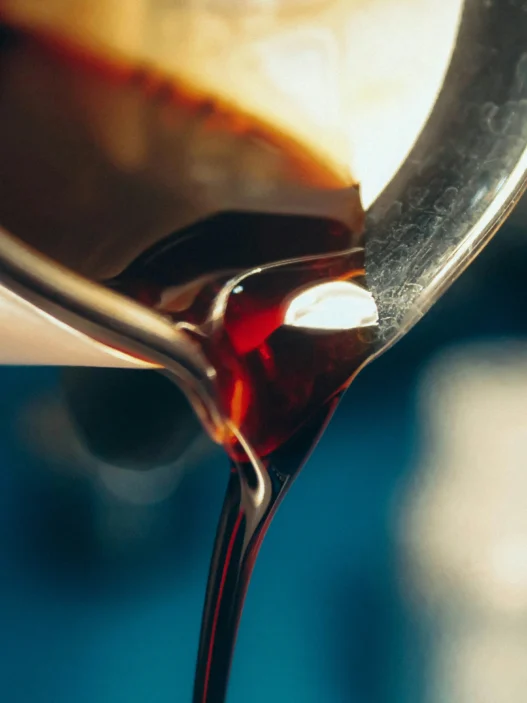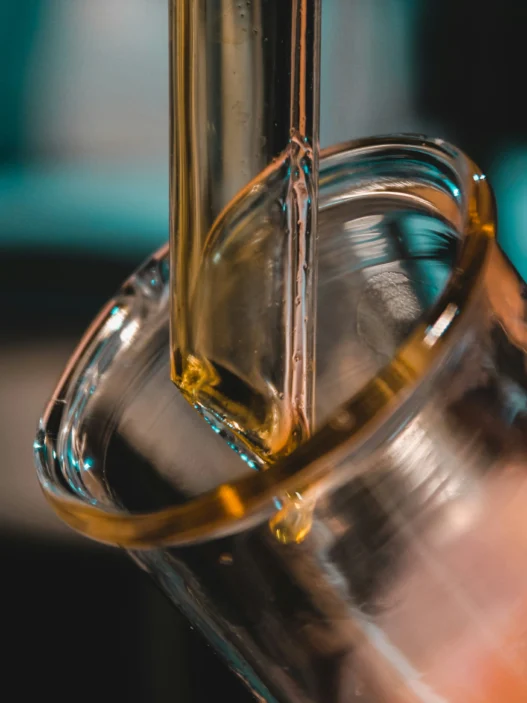1-Chloronaphthalene is a compound commonly used in the production of pesticides, insecticides, and certain types of lubricants. While not directly encountered in everyday life by the average consumer, its presence in these applications has significant implications for maintaining agricultural productivity and controlling pest populations. Additionally, the lubricants made with 1-Chloronaphthalene play a key role in facilitating the smooth operation of machinery and equipment in various industries. Thus, the relevance of 1-Chloronaphthalene to everyday life lies in its indirect impact on the efficiency and effectiveness of agricultural practices and industrial processes.
Table of Contents:
- 💡 Commercial Applications
- ⚗️ Chemical & Physical Properties
- 🏭 Production & Procurement
- ⚠️ Safety Considerations
- 🔬 Potential Research Directions
- 🧪 Related Compounds
💡 Commercial Applications
1-Chloronaphthalene, a chemical compound commonly known as 1-CN, has a variety of commercial and industrial applications. It is predominantly used as a chemical intermediate in the production of dyes, pigments, and other aromatic chemicals. Additionally, 1-Chloronaphthalene is utilized as a solvent in the manufacture of pesticides, agrochemicals, and leather chemicals.
Furthermore, 1-Chloronaphthalene finds application as a heat transfer fluid in various industrial processes due to its high thermal stability and low freezing point. It is also employed as a corrosion inhibitor in metalworking fluids and as a lubricant additive to improve anti-wear and anti-friction properties in automotive and industrial applications.
In the realm of drug and medication applications, 1-Chloronaphthalene is not commonly used due to its toxicity and potential health hazards. However, it has been studied for its potential antifungal and antimicrobial properties. Research is ongoing to explore its efficacy in certain medical applications, but caution is advised due to its toxic nature.
⚗️ Chemical & Physical Properties
1-Chloronaphthalene is a colorless liquid with a faint aromatic odor that is slightly soluble in water. It is commonly used as a chemical intermediate in the production of dyes and other organic compounds.
The molar mass of 1-Chloronaphthalene is approximately 162.62 g/mol, and its density is around 1.206 g/cm³. In comparison to common food items, such as water with a molar mass of 18.015 g/mol and a density of 1.00 g/cm³, 1-Chloronaphthalene has a higher molar mass and density.
The melting point of 1-Chloronaphthalene is around -41.8 °C, and its boiling point is approximately 255.7 °C. In comparison to common food items like sugar with a melting point of 186 °C and water with a boiling point of 100 °C, 1-Chloronaphthalene has a lower melting point and higher boiling point.
1-Chloronaphthalene is insoluble in water but soluble in organic solvents, and it has a relatively low viscosity. In comparison to common food items like salt which is soluble in water and honey which has a higher viscosity, 1-Chloronaphthalene shows different solubility in water and viscosity properties.
🏭 Production & Procurement
1-Chloronaphthalene is typically produced through the chlorination of naphthalene, a process that involves the addition of chlorine gas in the presence of a catalyst. This results in the substitution of a hydrogen atom on the naphthalene molecule with a chlorine atom, yielding 1-Chloronaphthalene as the final product.
Once 1-Chloronaphthalene is produced, it can be procured through chemical suppliers or manufacturers who specialize in aromatic compounds. The compound is typically transported in sealed containers or drums to prevent leakage or contamination during transit.
In the procurement and transportation of 1-Chloronaphthalene, it is crucial to adhere to proper safety measures and regulations to ensure the safe handling and storage of the compound. This may include proper labeling, storing in designated areas, and following guidelines for the disposal of any waste or byproducts.
⚠️ Safety Considerations
Safety considerations for 1-Chloronaphthalene include the potential for skin and eye irritation upon contact. Prolonged or repeated exposure may cause damage to the skin, eyes, or respiratory system. It is important to handle 1-Chloronaphthalene with care, wearing appropriate personal protective equipment such as gloves, goggles, and a lab coat to minimize risk of exposure.
Hazard statements for 1-Chloronaphthalene include “Causes skin irritation” and “Causes serious eye irritation.” It is also stated that prolonged or repeated exposure may cause respiratory irritation. These hazard statements highlight the importance of taking proper precautions when working with 1-Chloronaphthalene to avoid potential health risks.
Precautionary statements for 1-Chloronaphthalene include “Avoid breathing dust/fume/gas/mist/vapors/spray” and “Wear protective gloves/protective clothing/eye protection/face protection.” It is also recommended to wash hands thoroughly after handling and to dispose of contaminated clothing and shoes. Following these precautionary statements will help to minimize the risk of exposure and ensure safe handling of 1-Chloronaphthalene.
🔬 Potential Research Directions
One potential research direction for 1-Chloronaphthalene is to explore its applications as a precursor in the synthesis of various organic compounds. This could involve investigating the reaction pathways and mechanisms involved in its transformation into different products.
Another avenue of research could involve studying the environmental impact of 1-Chloronaphthalene, particularly its persistence in soil and water systems. This could include conducting experiments to assess its degradation pathways and potential toxicity to living organisms.
Furthermore, researchers could investigate the potential use of 1-Chloronaphthalene as a chemical intermediate in the production of pharmaceuticals or agrochemicals. This could involve exploring its reactivity with different functional groups and its potential as a building block in organic synthesis.
🧪 Related Compounds
One compound similar to 1-Chloronaphthalene based upon molecular structure is 2-Chloronaphthalene. The structural difference between 1-Chloronaphthalene and 2-Chloronaphthalene is the position of the chlorine substituent on the naphthalene ring. In 2-Chloronaphthalene, the chlorine atom is attached to the second carbon atom of the naphthalene ring, whereas in 1-Chloronaphthalene, the chlorine atom is attached to the first carbon atom.
Another similar compound is 1-Bromonaphthalene. Like 1-Chloronaphthalene, 1-Bromonaphthalene has a halogen atom (bromine) attached to the first carbon atom of the naphthalene ring. The molecular structure of 1-Bromonaphthalene is comparable to that of 1-Chloronaphthalene, with the only difference being the substitution of chlorine with bromine.
Furthermore, 1-Iodonaphthalene is another compound with a similar molecular structure to 1-Chloronaphthalene. In this compound, the halogen atom (iodine) is attached to the first carbon atom of the naphthalene ring, similar to 1-Chloronaphthalene. The presence of the halogen atom in the same position on the naphthalene ring results in comparable chemical properties between 1-Chloronaphthalene and 1-Iodonaphthalene.





